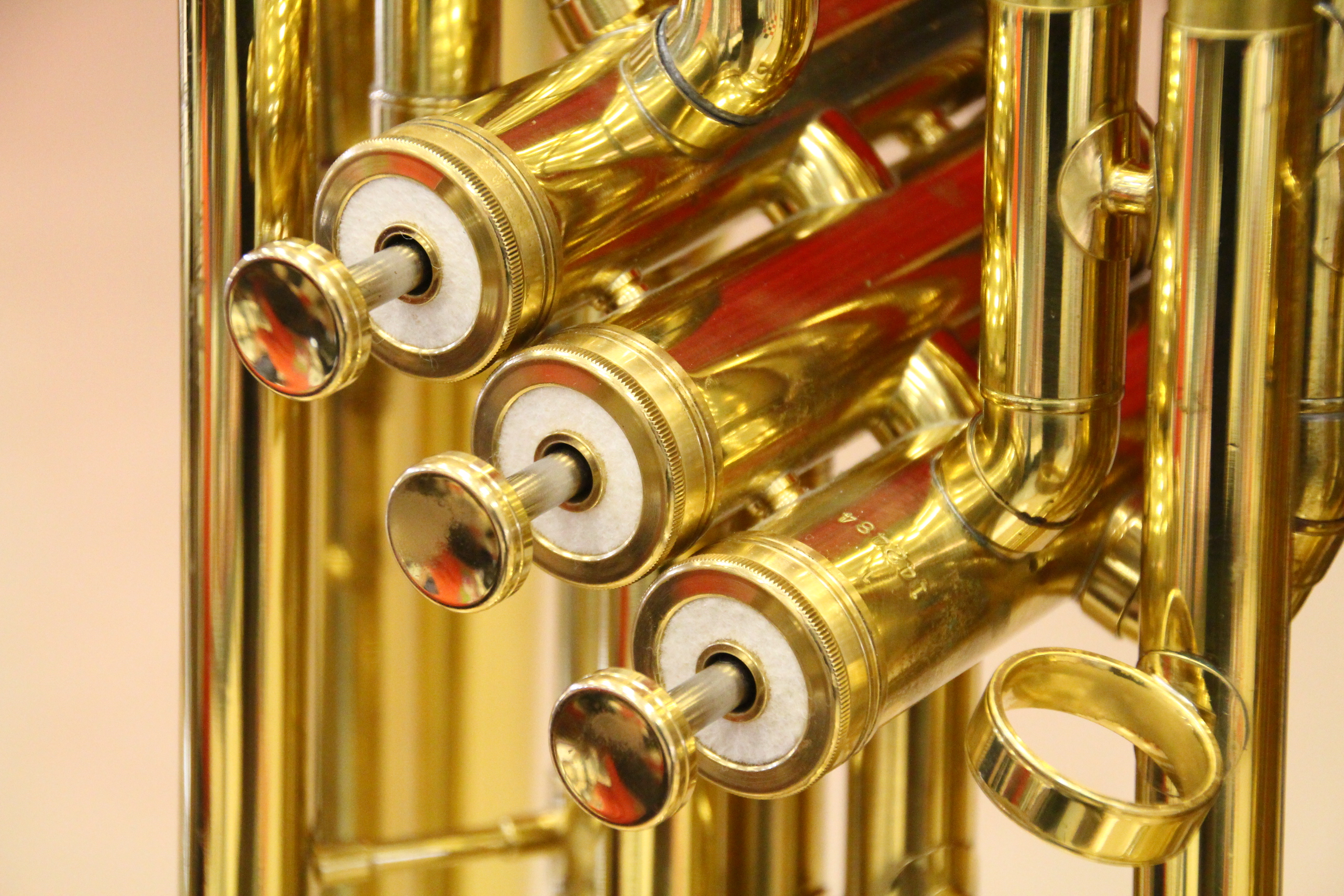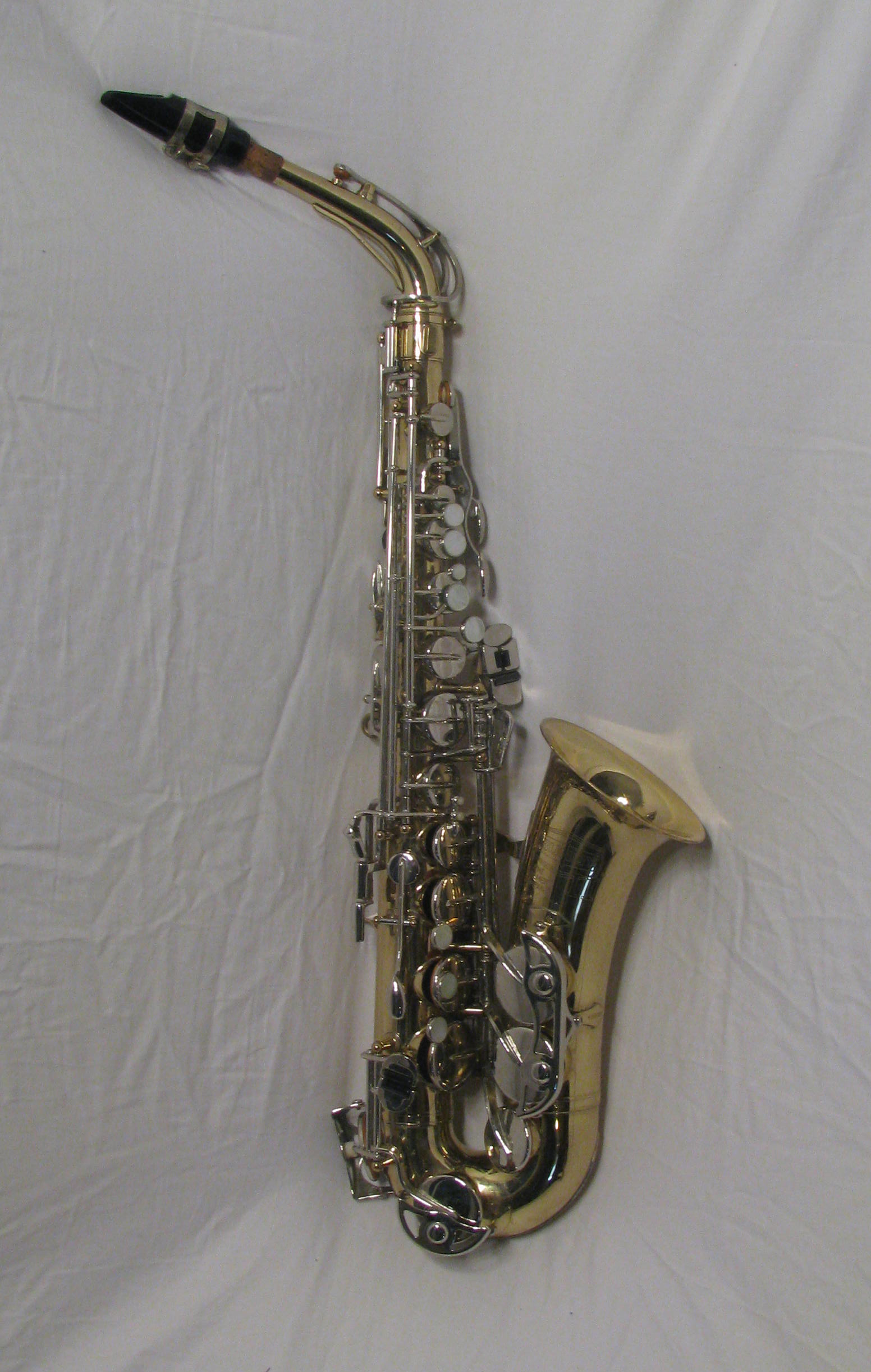|
Trombonium
The trombonium is a brass instrument formerly manufactured by H.N. White Company and Conn-Selmer. It was unveiled by H.N. White in 1938 and was manufactured until the mid 1970s. The trombonium has the same timbre as a regular trombone The trombone (, Italian, French: ''trombone'') is a musical instrument in the Brass instrument, brass family. As with all brass instruments, sound is produced when the player's lips vibrate inside a mouthpiece, causing the Standing wave, air c ... except in a smaller, more compact form. It was originally designed to be used as a marching trombone, and has valves rather than a slide thus superficially resembles a tenor horn or euphonium. It was used by the University of Southern California Marching Band and on a handful of jazz recordings (e.g., '' Jay and Kai + 6''). References Trombones {{Brass instruments ... [...More Info...] [...Related Items...] OR: [Wikipedia] [Google] [Baidu] |
Jay And Kai + 6
''Jay and Kai + 6'' is the fifth album by jazz trombonists J.J. Johnson and Kai Winding, credited on this album as The Jay and Kai Trombone Octet. The title refers to the six trombonists (including two bass trombonists) who accompany Johnson and Winding on the recording. Columbia Records released the album (Columbia CL 892) as a monaural LP record in 1956. In December 1956, ''Jay and Kai + 6'' reached the № 3 position on the ''Billboard'' jazz chart. Track listing The following track listing refers to the original LP configuration. Personnel * J.J. Johnson – trombone, trombonium, arranger * Kai Winding – trombone, trombonium, arranger * Urbie Green – trombone * Bob Alexander – trombone * Eddie Bert – trombone * Jimmy Cleveland – trombone * Tom Mitchell – bass trombone * Bart Varsalona – bass trombone * Hank Jones – piano * Milt Hinton – bass ("Piece For Two Tromboniums", "Rise 'N' Shine", "No Moon at All", "Surrey With The Fringe On T ... [...More Info...] [...Related Items...] OR: [Wikipedia] [Google] [Baidu] |
Trombone
The trombone (, Italian, French: ''trombone'') is a musical instrument in the Brass instrument, brass family. As with all brass instruments, sound is produced when the player's lips vibrate inside a mouthpiece, causing the Standing wave, air column inside the instrument to vibrate. Nearly all trombones use a telescoping slide mechanism to alter the Pitch (music), pitch instead of the brass instrument valve, valves used by other brass instruments. The valve trombone is an exception, using three valves similar to those on a trumpet, and the superbone has valves and a slide. The word "trombone" derives from Italian ''tromba'' (trumpet) and ''-one'' (a suffix meaning "large"), so the name means "large trumpet". The trombone has a predominantly cylindrical bore like the trumpet, in contrast to the more conical brass instruments like the cornet, the flugelhorn, the Baritone horn, baritone, and the euphonium. The most frequently encountered trombones are the tenor trombone and bass tr ... [...More Info...] [...Related Items...] OR: [Wikipedia] [Google] [Baidu] |
Euphonium
The euphonium ( ; ; ) is a tenor- and baritone-voiced valved brass instrument. The euphonium is a member of the large family of valved bugles, along with the tuba and flugelhorn, characterised by a wide conical bore. Most instruments have three or four valves, usually compensating piston valves, although instruments with rotary valves are common in Eastern and Central Europe. Euphonium repertoire may be notated in the bass clef as a non-transposing instrument or in the treble clef as a transposing instrument in B. In British brass bands, it is typically treated as a treble-clef instrument, while in American band music, parts may be written in either treble clef or bass clef, or both. A musician who plays the euphonium is known as a euphoniumist, a euphonist, or simply a euphonium or "eupho" player. Name The euphonium derives its name from the Ancient Greek word ''euphōnos'', meaning "well-sounding" or "sweet-voiced" ( ''eu'' means "well" or "good" and ''phōnē'' me ... [...More Info...] [...Related Items...] OR: [Wikipedia] [Google] [Baidu] |
Wind Instrument
A wind instrument is a musical instrument that contains some type of resonator (usually a tube) in which a column of air is set into vibration by the player blowing into (or over) a mouthpiece set at or near the end of the resonator. The pitch of the vibration is determined by the length of the tube and by manual modifications of the effective length of the vibrating column of air. In the case of some wind instruments, sound is produced by blowing through a reed; others require buzzing into a metal mouthpiece, while yet others require the player to blow into a hole at an edge, which splits the air column and creates the sound. Methods for obtaining different notes * Using different air columns for different tones, such as in the pan flute. These instruments can play several notes at once. * Changing the length of the vibrating air column by changing the length of the tube through engaging valves ''(see rotary valve, piston valve)'' which route the air through additional tubing, ... [...More Info...] [...Related Items...] OR: [Wikipedia] [Google] [Baidu] |
Brass Instrument
A brass instrument is a musical instrument that produces sound by Sympathetic resonance, sympathetic vibration of air in a tubular resonator in sympathy with the vibration of the player's lips. The term ''labrosone'', from Latin elements meaning "lip" and "sound", is also used for the group, since instruments employing this "lip reed" method of sound production can be made from other materials like wood or animal horn, particularly early or traditional instruments such as the cornett, alphorn or shofar. There are several factors involved in producing different Pitch of brass instruments, pitches on a brass instrument. Slide (wind instrument), Slides, Brass instrument valve, valves, Crook (music), crooks (though they are rarely used today), or Key (instrument), keys are used to change vibratory length of tubing, thus changing the available harmonic series (music), harmonic series, while the player's embouchure, lip tension and air flow serve to select the specific harmonic produ ... [...More Info...] [...Related Items...] OR: [Wikipedia] [Google] [Baidu] |
Aerophone
An aerophone is a musical instrument that produces sound primarily by causing a body of air to vibrate, without the use of strings or membranes (which are respectively chordophones and membranophones), and without the vibration of the instrument itself adding considerably to the sound (or idiophones). According to Curt Sachs: These may be lips, a mechanical reed, or a sharp edge. Also, an aerophone may be excited by percussive acts, such as the slapping of the keys of a flute or of any other woodwind. A free aerophone lacks the enclosed column of air yet, "cause a series of condensations and rarefications by various means." Overview Aerophones are one of the four main classes of instruments in the original Hornbostel–Sachs system of musical instrument classification, which further classifies aerophones by whether or not the vibrating air is contained within the instrument. The first class (41) includes instruments which, when played, do ''not'' contain the vibrating air. ... [...More Info...] [...Related Items...] OR: [Wikipedia] [Google] [Baidu] |
Brass Instrument
A brass instrument is a musical instrument that produces sound by Sympathetic resonance, sympathetic vibration of air in a tubular resonator in sympathy with the vibration of the player's lips. The term ''labrosone'', from Latin elements meaning "lip" and "sound", is also used for the group, since instruments employing this "lip reed" method of sound production can be made from other materials like wood or animal horn, particularly early or traditional instruments such as the cornett, alphorn or shofar. There are several factors involved in producing different Pitch of brass instruments, pitches on a brass instrument. Slide (wind instrument), Slides, Brass instrument valve, valves, Crook (music), crooks (though they are rarely used today), or Key (instrument), keys are used to change vibratory length of tubing, thus changing the available harmonic series (music), harmonic series, while the player's embouchure, lip tension and air flow serve to select the specific harmonic produ ... [...More Info...] [...Related Items...] OR: [Wikipedia] [Google] [Baidu] |
Conn-Selmer
Conn-Selmer, Inc. is an American manufacturer of musical instruments for concert bands, marching bands and orchestras. It is a wholly owned subsidiary of Steinway Musical Instruments and was formed in 2003 by combining the Steinway properties, The Selmer Company and United Musical Instruments. Conn-Selmer is the largest manufacturer and importer of band and orchestral instruments in the United States. The company produces a large variety of musical instruments itself and through contractors under the brand names Vincent Bach, C.G. Conn, King, Holton, Selmer, Armstrong, Leblanc, Ludwig, Musser, and Scherl & Roth. Conn-Selmer is also the North American distributor of Henri Selmer Paris woodwinds and the U.S. distributor of Yanagisawa saxophones. History Origins The origins of the Conn-Selmer company begin with the H. & A. Selmer company. In the late nineteenth century, brothers Alexandre and Henri Selmer graduated from the Paris Conservatory as clarinetists. They were the g ... [...More Info...] [...Related Items...] OR: [Wikipedia] [Google] [Baidu] |
Timbre
In music, timbre (), also known as tone color or tone quality (from psychoacoustics), is the perceived sound of a musical note, sound or tone. Timbre distinguishes sounds according to their source, such as choir voices and musical instruments. It also enables listeners to distinguish instruments in the same category (e.g., an oboe and a clarinet, both woodwinds). In simple terms, timbre is what makes a particular musical instrument or human voice have a different sound from another, even when they play or sing the same note. For instance, it is the difference in sound between a guitar and a piano playing the same note at the same volume. Both instruments can sound equally tuned in relation to each other as they play the same note, and while playing at the same amplitude level each instrument will still sound distinctive with its own unique tone color. Musicians distinguish instruments based on their varied timbres, even instruments playing notes at the same pitch and volume ... [...More Info...] [...Related Items...] OR: [Wikipedia] [Google] [Baidu] |
Tenor Horn
The Tenor horn (British English; Alto horn in American English, Althorn in Germany; occasionally referred to as E horn) is a brass instrument in the saxhorn family and is usually pitched in E. It has a bore that is mostly conical, like the flugelhorn and euphonium, and normally uses a deep, cornet-like mouthpiece. It is most commonly used in British brass bands, and Mexican banda music whereas the French horn tends to take the corresponding parts in concert bands and orchestras. However, the tenor horn has occasionally been used as an alternative to the French horn in concert bands. Description The tenor horn is a valved brass instrument (in E) which has a predominantly conical bore like that of the euphonium and flugelhorn. It uses a deep funnel- or cup-shaped mouthpiece. The tenor horn's conical bore and deep mouthpiece produce a mellow, rounded tone that is often used as a middle voice, supporting the melodies of the trumpets, cornets, or flugelhorns, and fills the ga ... [...More Info...] [...Related Items...] OR: [Wikipedia] [Google] [Baidu] |







